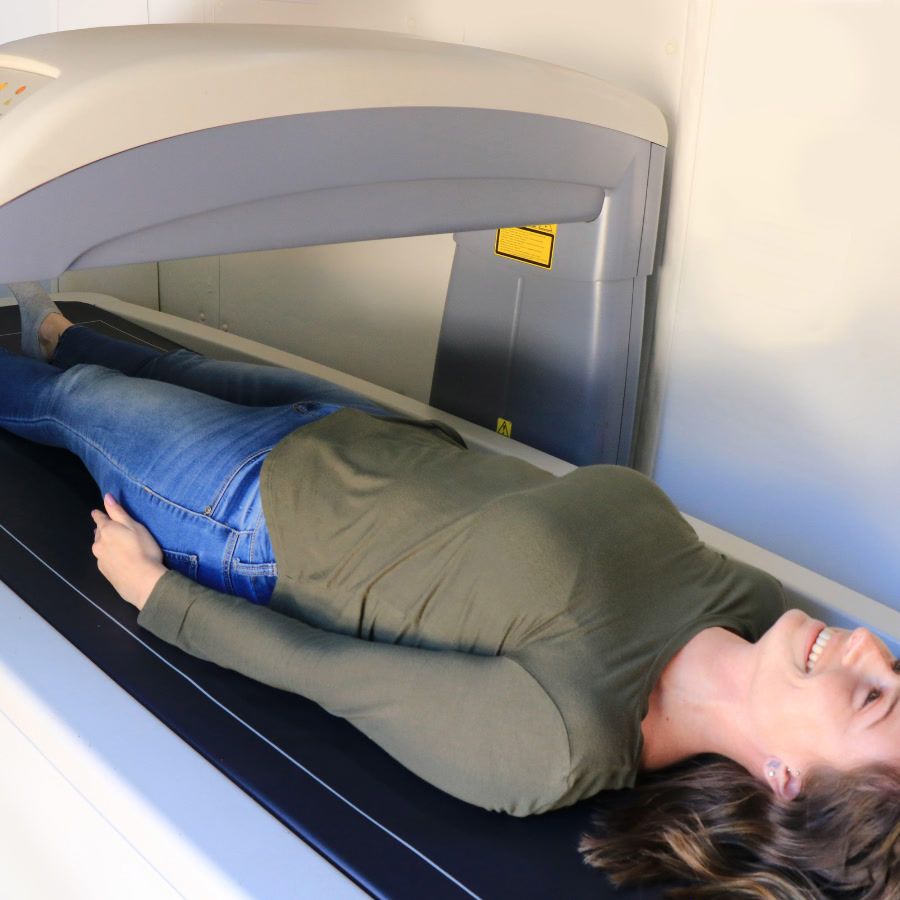Comparing Hypertrophy and Strength Training: What's the Difference?

Comparing Hypertrophy and Strength Training: What's the Difference?
Hypertrophy and strength training are two popular approaches to physical fitness that target different goals. Understanding the differences between hypertrophy and strength training can help you tailor your workouts to achieve specific outcomes. In this article, we will explore the basics of hypertrophy and strength training, delve into the science behind muscle growth, highlight key differences between the two approaches, and discuss the benefits of each. Let's dive in!
Get weekly updates.
Understanding the Basics of Hypertrophy and Strength Training
To grasp the differences between hypertrophy and strength training, it's essential to define each approach. However, before we delve into the details, let's explore the fascinating world of muscle development and how it responds to different training stimuli.
When we talk about muscle growth, we often refer to two primary mechanisms: hypertrophy and strength training. Both approaches have distinct goals and methods, but they ultimately contribute to an individual's overall fitness and physical performance.
Defining Hypertrophy Training
Hypertrophy training, also known as bodybuilding, focuses on increasing muscle size and definition. This type of training involves lifting weights at a moderate intensity, typically in the 8-12 rep range. The goal is to create microscopic damage to muscle fibers, which then repair and grow stronger and larger during the recovery process.
During hypertrophy training, the body adapts to the stress placed upon it by increasing the size and number of muscle fibers. This adaptation occurs through a process called protein synthesis, where the body synthesizes new proteins to repair and strengthen the damaged muscle fibers. Over time, this leads to an increase in muscle size, giving the body a more sculpted and defined appearance.
Additionally, hypertrophy training often involves incorporating various training techniques, such as drop sets, supersets, and time under tension, to further stimulate muscle growth. These techniques help create metabolic stress and increase the production of anabolic hormones, such as testosterone and growth hormone, which play a crucial role in muscle development.
Defining Strength Training
Strength training, on the other hand, concentrates on enhancing your body's ability to exert force. It involves lifting heavy weights at a high intensity, typically in the 1-6 rep range. The focus here is on maximizing the nervous system's recruitment of muscle fibers, resulting in increased neural efficiency and overall strength.
Unlike hypertrophy training, strength training primarily targets the development of the central nervous system (CNS). The CNS plays a vital role in coordinating muscle contractions and generating force. Through strength training, the CNS becomes more efficient at activating motor units, which are groups of muscle fibers controlled by a single nerve cell. This increased neural efficiency allows individuals to lift heavier weights and exert more force.
Strength training also promotes the development of connective tissues, such as tendons and ligaments, which provide stability and support to the muscles. These tissues adapt to the stress placed upon them by becoming thicker and stronger, reducing the risk of injuries during intense physical activities.
Moreover, strength training has been shown to have numerous benefits beyond just increasing strength. It can improve bone density, enhance metabolic rate, and even boost cognitive function. These additional benefits make strength training a valuable component of any well-rounded fitness program.
So, while hypertrophy training focuses on muscle size and definition, strength training emphasizes maximizing force production and overall physical performance. Both approaches have their unique benefits and play crucial roles in achieving specific fitness goals. Whether you aim to build a more muscular physique or enhance your strength and power, understanding these training methods will help you design an effective and tailored workout program.
The Science Behind Muscle Growth
Both hypertrophy and strength training methodologies are rooted in the science of muscle growth.
When it comes to muscle growth, understanding the role of protein synthesis is crucial. Protein synthesis is the process by which new proteins are produced within muscle cells, and it is a key mechanism behind muscle growth. Both hypertrophy and strength training stimulate protein synthesis, albeit to varying degrees.
Hypertrophy training, which focuses on increasing muscle size, triggers a more pronounced increase in protein synthesis. This means that when you engage in hypertrophy training, your muscles experience a significant boost in the production of new proteins, leading to greater muscle hypertrophy.
On the other hand, strength training primarily enhances neural adaptations. While it also stimulates protein synthesis, the increase is not as significant as in hypertrophy training. Instead, strength training primarily focuses on improving the efficiency and coordination of the nervous system, allowing you to exert more force and lift heavier weights.
The Role of Protein Synthesis in Muscle Growth
Protein synthesis, as mentioned earlier, is a fundamental process in muscle growth. It involves the creation of new proteins within muscle cells, which are essential for repairing and building muscle tissue.
When you engage in resistance training, whether it's hypertrophy or strength training, you create mechanical tension within the muscle fibers. This tension is what sets off a cascade of cellular responses that ultimately lead to increased muscle size and strength.
During resistance training, the mechanical tension stimulates the activation of satellite cells, which are dormant cells located around muscle fibers. These satellite cells play a crucial role in muscle repair and growth. When activated, they fuse with existing muscle fibers, contributing to the increase in muscle size.
In addition to satellite cell activation, resistance training also triggers an increase in the production of growth factors such as insulin-like growth factor 1 (IGF-1) and testosterone. These growth factors further enhance protein synthesis and promote muscle growth.
How Resistance Training Impacts Muscle Growth
Regardless of whether you prioritize hypertrophy or strength, resistance training is the key to promoting muscle growth. The mechanical tension created during resistance training is the primary stimulus for muscle adaptation.
When you lift weights or engage in other forms of resistance training, the muscle fibers experience microscopic damage. This damage, known as muscle microtrauma, is necessary for muscle growth to occur. In response to the microtrauma, the body initiates a repair process that involves the activation of satellite cells and the synthesis of new proteins.
As the muscle fibers repair and adapt to the stress placed upon them, they become larger and stronger. This adaptation is a result of increased protein synthesis, the activation of satellite cells, and the production of growth factors.
It's important to note that the specific adaptations and physiological changes differ depending on whether you prioritize hypertrophy or strength. Hypertrophy training focuses on maximizing muscle size, while strength training emphasizes neural adaptations and the ability to exert force.
In conclusion, understanding the science behind muscle growth is essential for designing effective training programs. Whether you're aiming for hypertrophy or strength, resistance training and the stimulation of protein synthesis are key factors in achieving your muscle growth goals.
Key Differences Between Hypertrophy and Strength Training
While hypertrophy and strength training share some common ground, several key differences set them apart.
Training Volume and Intensity
Hypertrophy training typically involves higher training volumes, with multiple sets and reps, aiming to induce a considerable amount of muscle damage. In contrast, strength training involves lower volumes but higher intensities, aiming to improve neural adaptations rather than causing extensive muscle damage.
Rest Periods and Recovery
Rest periods and recovery play a crucial role in both hypertrophy and strength training. In hypertrophy training, shorter rest periods are often employed to maintain a higher level of fatigue and metabolic stress. In contrast, strength training usually involves longer rest periods to allow for complete recovery between intense sets, ensuring maximal force production during subsequent efforts.
Benefits of Hypertrophy Training
Now that we have explored how hypertrophy and strength training differ, let's focus on the unique benefits of hypertrophy training.
Aesthetic Improvements
One of the primary benefits of hypertrophy training is its ability to sculpt and shape your muscles, leading to a more aesthetically pleasing physique. By focusing on muscle hypertrophy, you can develop well-defined muscles and achieve the popular "toned" appearance.
Increased Muscle Endurance
By training in higher rep ranges, hypertrophy training improves muscle endurance. This endurance can translate to activities in daily life, as well as sports or other physical activities that require sustained effort over extended periods.
Benefits of Strength Training
While hypertrophy training offers specific benefits, strength training also has its own advantages.
Enhanced Physical Performance
Strength training is particularly beneficial for athletes and individuals pursuing activities that demand high levels of strength, such as powerlifting, Olympic lifting, and contact sports. By training the nervous system to recruit muscles efficiently, strength training can significantly enhance physical performance in these endeavors.
Improved Bone Health
Strength training helps to improve and preserve bone health by stimulating bone formation and density. This is especially important for women, as they are more prone to osteoporosis and other bone-related issues. Regular strength training can help reduce the risk of fractures and maintain strong, healthy bones.
In conclusion, hypertrophy and strength training are distinct approaches to physical fitness, each with its unique benefits. Hypertrophy training primarily focuses on muscle growth and aesthetic improvements, while strength training enhances neural adaptations and physical performance, with the added benefit of improving bone health. Incorporating elements from both approaches can help you achieve a balanced and well-rounded fitness routine. Now that you understand the differences, consider implementing a training plan that aligns with your goals and helps you thrive.
For an accurate assessment of your body composition changes, including body fat percentage, muscle mass, and bone health, consider BodySpec's affordable DEXA scans. These scans provide valuable insights, allowing you to track your progress over time and make informed decisions about your training and nutrition. Take control of your fitness journey and unlock a deeper understanding of your body.


